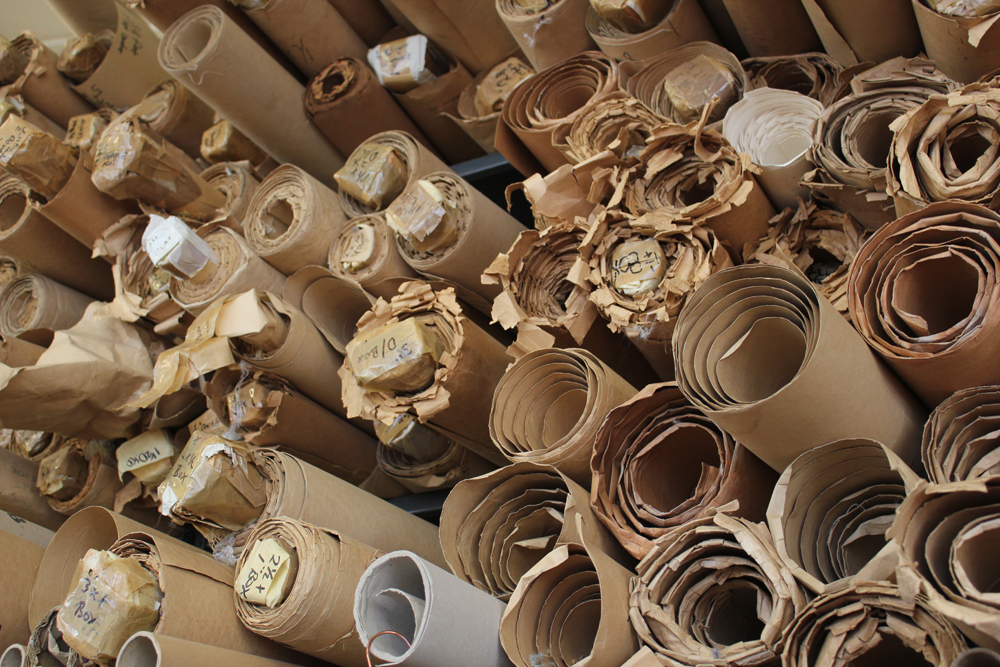In this post I'm going to tell you a little bit about a manufacturing process called pleating which is used to fold fabric. Pleating is a heat setting technique where fabric is placed between a two part mould and put inside a steaming machine. Pleating has been used for hundreds of years but unfortunately it is now a dying trade in the UK. I work with a team of specialist pleaters who are one of the last left in the UK and are experts in the pleating process.
So, I'm going to give you a run through of how to pleat fabric. First, a two piece paper mould is made by marking out the folding pattern on to a special card by hand, using a pencil. The card is coated with a resin to protect it from heat and moisture for when it goes in the steaming machine. Once the pencil marks are in place the pattern is scored using a small tool with a wooden handle and a blunt metal tip. A pattern making awl with a blunt end is perfect for this. Then the two patterns are folded into the desired 3D shape by hand. This process can take anything from 4 or 5 hours up to one month or even more, depending on the complexity of the pattern. Some complex patterns can be pre-scored with a machine which really speeds up the process.
Once the pattern is ready, the fabric is placed in between the two layers of card and weights are placed on top to keep the fabric from moving. It is then folded together by hand and strapped together very tightly with strips of fabric so that it can't unfold. The pleating pattern is then placed inside a steaming machine for 25 - 30 minutes to set the folded shape in the fabric. After it has cooled, the pattern is opened up and the folded fabric is removed. Patterns can be used hundreds of times, due to the resilience of the card that is used. For more information on how to pleat fabric , follow the link below to see examples of our pleating projects.







